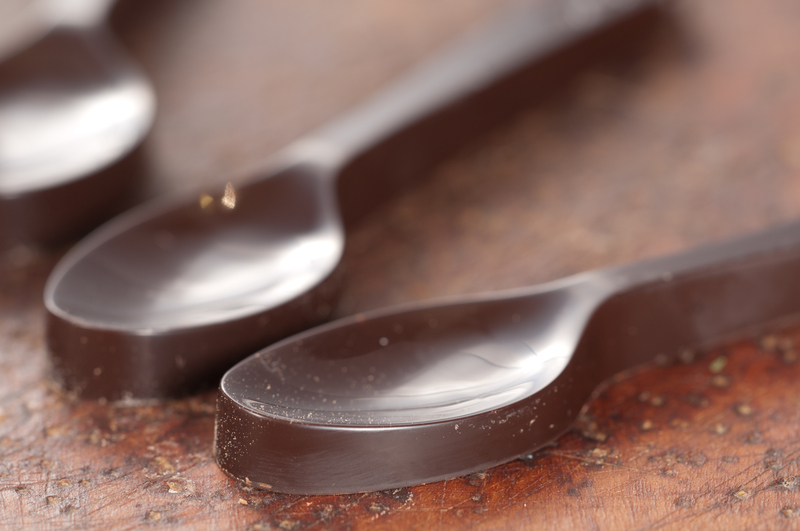Responsible Disposal Techniques for Plant Pots
Posted on 17/05/2025
Responsible Disposal Techniques for Plant Pots
Disposing of unwanted or old plant pots can be a challenge for many gardeners and plant lovers. With sustainability and environmental awareness becoming increasingly important, knowing the correct responsible disposal techniques for plant pots is critical. This comprehensive guide will walk you through eco-friendly and responsible ways to manage plastic, ceramic, and biodegradable pots so you can declutter your garden guilt-free and contribute to a healthier planet.

Why Responsible Disposal of Plant Pots Matters
Millions of plant containers are used in homes and horticulture industries each year, but many end up in landfills. Improper disposal not only contributes to environmental pollution but also wastes valuable materials that could be reused or recycled. By adopting safe and eco-friendly disposal methods for plant pots, you help reduce greenhouse gases, conserve resources, and promote a greener future.
Environmental Issues Associated with Plant Pot Disposal
- Plastic pots can take hundreds of years to decompose.
- Some ceramics leach chemicals into soil and water systems.
- Plant pot waste adds to overflowing landfills.
- Burning plastic pots releases toxic fumes into the air.
That's why it's essential to learn about eco-conscious plant pot disposal techniques that keep both your garden and the environment safe.
What Types of Plant Pots Need Responsible Disposal?
- Plastic pots - Black, colored, or clear plastic containers and trays typically used in nurseries.
- Terracotta and ceramic pots - Glazed and unglazed, fragile, often broken.
- Biodegradable pots - Made from materials like coconut coir, peat, rice hulls, or paper.
- Metal and composite containers - Less common, sometimes used for decorative purposes.
Each material requires a different, responsible plant pot disposal solution to ensure its minimal impact on the earth.
Eco-Friendly Disposal Techniques for Plastic Plant Pots
1. Reuse and Repurpose
Perhaps the most responsible and eco-friendly technique for plastic plant pots is reusing or repurposing them. Before discarding, consider the following creative and sustainable options:
- Start new seedlings: Old pots make excellent germination stations.
- Organize tools or craft items: Use different sizes for storage in your shed or garage.
- Donate to schools, community gardens, or garden clubs: Many institutions are happy to receive free gardening supplies.
- DIY crafts: Paint or decorate them for use as gift planters or storage bins.
*Tip: Always rinse out old soil before reusing plant pots to reduce the risk of plant diseases.*
2. Recycle - The Best Responsible Disposal Option for Plastic Pots
If repurposing isn't possible, the next best responsible method for disposing of plastic plant pots is recycling.
- Identify the plastic type: Most plant pots are made from polypropylene (recycling symbol #5) or high-density polyethylene (#2).
- Check local recycling programs: Not every community recycles garden plastics. Check your local guidelines and restrictions.
- Drop-off options: Many garden centers now offer plant pot recycling programs. These programs collect plastic pots for reprocessing into new garden products.
- Prepare pots for recycling: Remove all soil, labels, and plant material. Stacking cleaned pots saves space and makes collection easier.
Not sure where to recycle? Use websites like Earth911 or your local council's resources to find the nearest recycling site that accepts garden plastics.
3. Upcycle: Give Old Pots a Second Life
Upcycling is the process of turning old or unwanted items into something new and useful. Here are some innovative ways to upcycle old plastic plant pots:
- Vertical garden walls using stacked or mounted pots.
- Outdoor light covers by painting and stringing together small pots.
- Hanging planters: Make creative arrangements for small herbs or succulents.
Responsible Disposal Techniques for Ceramic, Terracotta, and Clay Pots
1. Repair and Reuse
Ceramic and terracotta plant pots are prized for their durability and aesthetics, but when they chip or crack, many end up sent to the landfill. Instead, try these responsible disposal ideas:
- Repair with waterproof adhesives or a homemade putty to extend the pot's life.
- Garden mosaic projects: Break pots into shards for use in decorative garden mosaics.
- Drainage fillers: Place broken pieces in the bottoms of other pots to aid drainage and airflow.
2. Donate or Exchange
Many schools, art clubs, and gardeners gladly accept secondhand ceramic or clay pots--especially if they're unique or vintage. Consider hosting a pot swap at your local community center, or offering them via online marketplaces and social media groups.
3. Landfill as a Last Resort
Unlike plastics, most ceramics and terracotta do not break down but are chemically inert. If disposal is unavoidable:
- Contact your municipal waste authority or recycling center to confirm if ceramics can be accepted as construction fill or aggregate.
- Never break up glazed pots to use in vegetable beds, as glazes may sometimes contain heavy metals.
Best Practices for Disposing of Biodegradable Plant Pots
Biodegradable pots are designed with the environment in mind. These include pots made from coconut coir, rice hulls, peat, pressed paper, and other organic fibers. They promote zero waste gardening when handled correctly.
1. Composting: The Most Responsible Option
- Check if the biodegradable pot is truly compostable (read labels carefully).
- Break up the pot to accelerate decomposition.
- Add to your home compost pile or green bin.
- Avoid composting pots treated with chemicals or plastics.
2. Direct Planting
Many eco-friendly plant pots are made to be planted directly in soil, where they naturally break down and feed your plants' root systems. Follow manufacturer instructions to ensure optimal decomposition and plant health.
Where to Take Old Plant Pots: Responsible Disposal Options
When it's time to dispose of extra, damaged, or unwanted containers, consider the following plant pot disposal methods:
- Garden Centers: Many chain and local garden supply stores run seasonal plant pot take-back programs.
- Community Recycling Events: Watch for special events that collect plastics, ceramics, and even compostable materials.
- Nonprofits and Schools: Donate usable pots and trays for classroom or gardening programs.
- Online Classifieds: Offer pots for free or trade via Craigslist, Facebook Marketplace, or Freecycle.
- Municipal Waste Facilities: Some recycling centers accept plant pots as scrap plastic or landfill diversion materials.
Tips for Preparing Plant Pots for Disposal
- Clean all pots: Remove soil, roots, and plant debris to prevent pest or disease transfer.
- Stack like with like: Group similar materials and sizes to simplify transport, recycling, or donation.
- Check local guidelines: Disposal rules vary widely. Always consult with your local recycling or waste authority.
Innovative & Sustainable Alternatives to Traditional Plant Pots
One of the most forward-thinking plant pot disposal strategies is to rethink purchasing habits altogether. Here are a few eco-conscious alternatives and practices:
- Buy bare-root or pot-free plants: Reduce waste by seeking out nurseries that sell without single-use plastic pots.
- Opt for plantable or compostable pots: Look for coconut coir, peat, bamboo, and rice hull containers for easy, responsible disposal.
- Support circular gardening: Participate in local pot return or deposit programs that sterilize and reuse plant containers.
- DIY pots: Use upcycled household items like tin cans, glass jars, or old baskets as temporary planters.

Frequently Asked Questions about Responsible Plant Pot Disposal
Can I put plastic plant pots in my curbside recycling?
It depends on your local recycling program. Many cities do not accept black plastics, and some garden containers are made from materials not included in curbside collections. Always check with your local waste authority or look for specialist recycling points.
How do I stop plastic plant pots from ending up in landfill?
The best way to keep pots out of landfill is to reuse, upcycle, or donate them whenever possible. Next best is to seek out dedicated plastic recycling schemes, often offered by garden centers or community projects.
Are biodegradable pots really better for the environment?
Generally, yes--provided they are made from natural materials and are composted properly. Be cautious with "compostable" labeling as some products require commercial composting conditions.
Can I use broken ceramic pots for anything?
Absolutely! Shattered ceramics can be repurposed as drainage layers in new pots, as material for garden mosaics, or even in landscaping as decorative mulch or path edging.
Conclusion: Make Responsible Disposal a Gardening Habit
Implementing responsible disposal techniques for plant pots isn't just about waste reduction. It's about protecting your local ecosystem and enhancing the sustainability of your gardening practices. With a bit of creativity, effort, and awareness, you can ensure your old plant pots find new purpose--or a safe end--without harming the planet.
- Reuse, repurpose, or donate before disposing.
- Choose recycling wherever possible, using specialized drop-off points.
- Compost biodegradable pots and avoid purchasing unnecessary plastics.
- Seek out sustainable, plantable, or reusable alternatives to further reduce waste.
Let's work together to create greener, more sustainable gardens by making responsible disposal of plant containers a daily, conscious habit!



